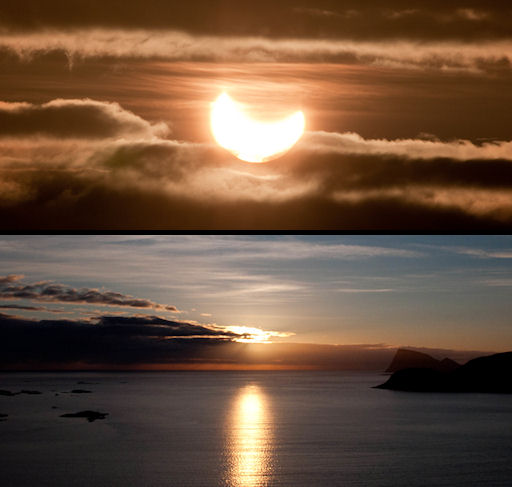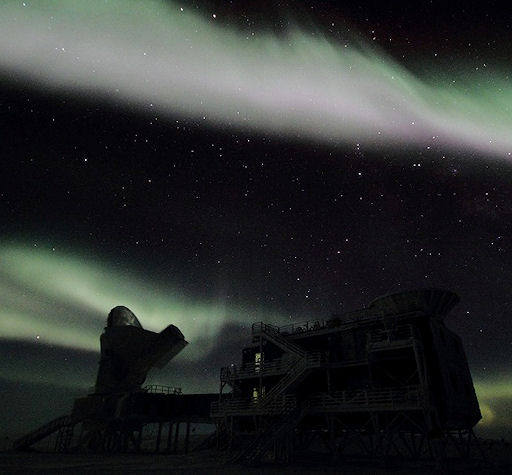CO-ORBITAL ASTEROID FLYBY: Small asteroid 2009 BD is flying through the Earth-moon system today about 215,000 miles from Earth. The 10m wide space rock poses no threat to our planet, but it is of acute scientific interest. "It's notable because it remains close to Earth for months at a time and is actually a co-orbitalobject with a very low delta-V (velocity) relative to Earth," writes Lance Benner of JPL. "A recurring question about objects with very low delta-V values is whether they may be ejecta from the Moon." Goldstone radar observations by Benner and colleagues in the nights ahead might illuminate the origin of this curious object.
ECLIPSE OF THE MIDNIGHT SUN: A solar eclipse at midnight? It's not only possible, it actually happened last night. On June 1st, the new Moon passed in front of the midnight sun above the Arctic circle, producing a partial eclipse of exquisite beauty. Bernt Olsen photographed the event from Sommarøy, Tromsø, Norway:
"A rain shower threatened to spoil the show, but just before midnight the clouds parted and I got a fairly clear shot of the eclipse," says Olsen. "I'm glad I did, because we won't experience an eclipse like this again for 73 years."
Until then, browse the links for more eclipse shots: from Renate Westlien of Tana, Finnmark, Norway; from Kulkova Svetlana of Bratsk, Russia; from Travis Stagg of Fairbanks Alaska; from B.Art Braafhart of Sallatunturi, Finnish Lapland; from Thomas Hagen of Tromsø, Norway; from Johan Kero of Bergfors, Kiruna, Sweden;from Joerg Schoppmeyer of Akureyri, Iceland;
SOUTH POLE AURORAS: Earth is exiting a solar wind stream that sparked colorful auroras on May 28th-30th. At the height of the display, Southern Lights over the geographic south pole became so bright, "they were tricky to photograph without overexposure," reports J. Dana Hrubes, science leader at the Amundsen-Scott South Pole Station. "The ice surface as well as the 10m primary mirror of the South Pole Telescope were well illuminated." (continued below)
"When I went outside to take these pictures on May 30th, the air temperature was about -94 F (-70 C)," says Hrubes. "Just days earlier, the temperature had dropped all the way to -103.4 F (-75.2 C), so the aurora photo-shoot was relatively warm."
Photographers at the South Pole, bundle up! Another solar wind stream is due to arrive on or about June 4th. Its impact could trigger renewed geomagnetic activity, and you might want to go outside.
More Images: from Brian Larmay of Pembine, Wisconsin; from Minoru Yoneto of Queenstown, New Zealand; from Neva Andersen of Saint Cloud, Minnesota; from Dave Curtis of Dunedin, New Zealand; from Ian Stewart of Hobart, Tasmania, Australia; from Tom Luttrell of Mount Nelson Signal Station, Hobart, Tasmania; from Beatrice van Eden of Antarctica.
Provided by Space Weather News

